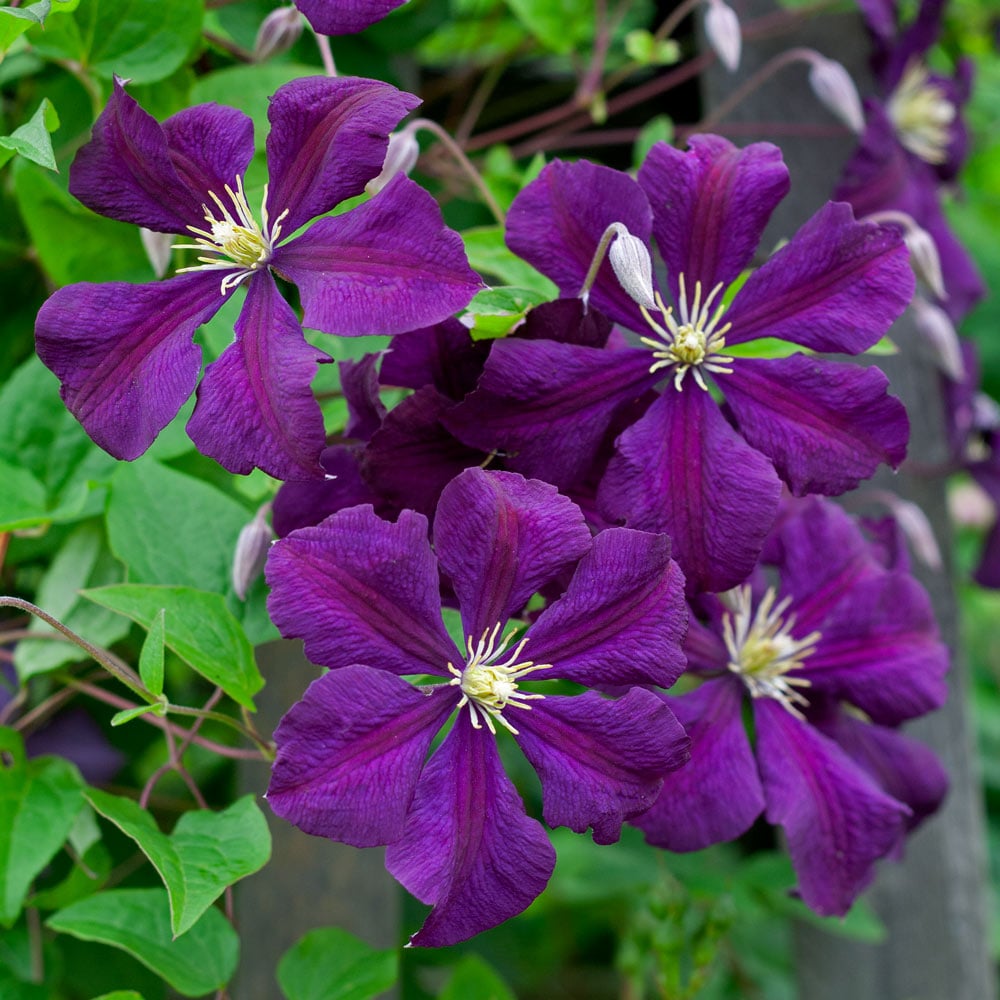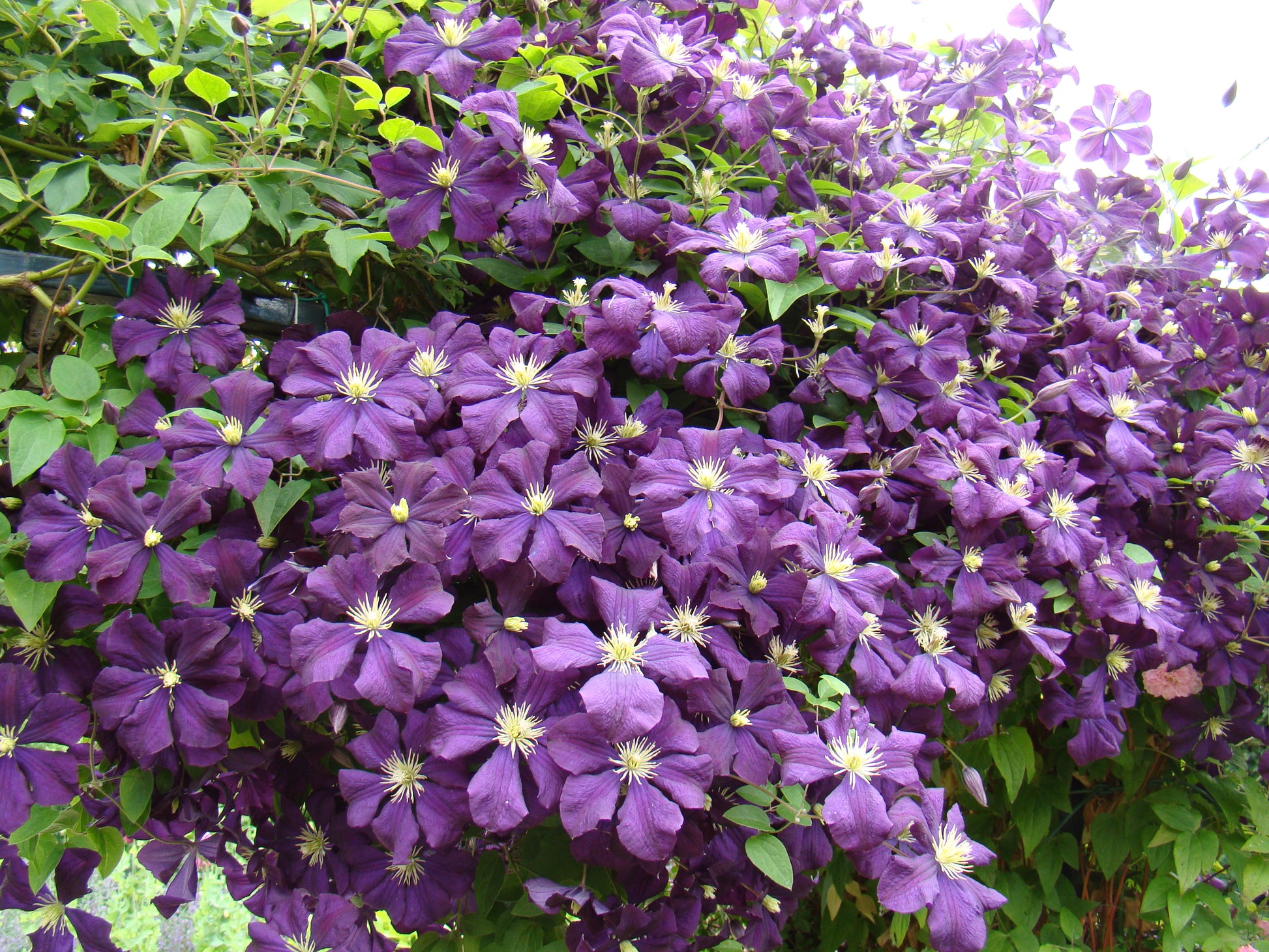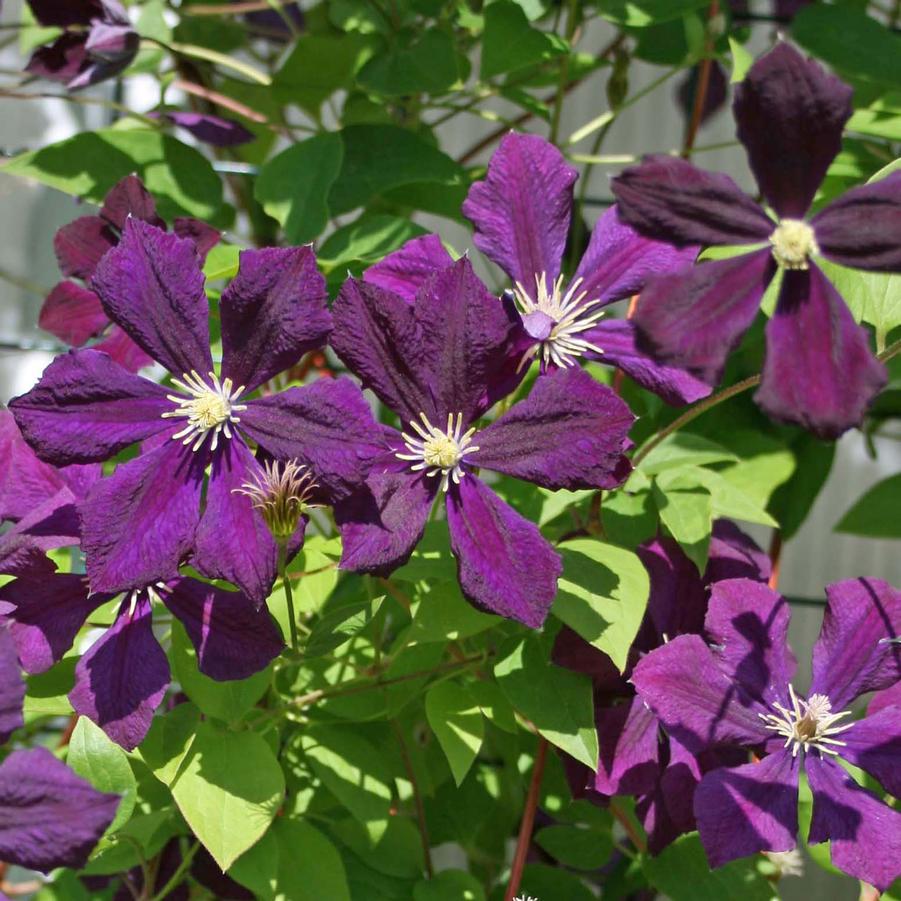Absolutely! Here’s a 3000-word article about Clematis ‘Étoile Violette’, covering various aspects of its cultivation, characteristics, and uses:
Clematis ‘Étoile Violette’, a captivating member of the Viticella group, has earned its place as a beloved garden classic. Its deep, velvety purple blooms, coupled with its robust growth and reliable performance, make it a must-have for any garden enthusiast. This article delves into the intricacies of this stunning climber, exploring its characteristics, cultivation, and the myriad ways it can enhance your outdoor space.
A Star is Born: Origins and Characteristics
‘Étoile Violette’, meaning “Violet Star” in French, was bred by the renowned French hybridizer, Francisque Morel, in 1885. This heritage contributes to its enduring popularity and its ability to withstand a range of growing conditions.
Distinctive Blooms: A Feast for the Eyes

The most striking feature of ‘Étoile Violette’ is undoubtedly its flowers. These are typically 2-3 inches (5-8 cm) in diameter, composed of 4-6 velvety, deep purple sepals with a slightly ruffled texture. The central creamy-yellow anthers provide a beautiful contrast, adding to the flower’s allure. The blooms are produced in abundance from midsummer to early autumn, creating a prolonged display of vibrant color.
Vigorous Growth: A Climber with Character
‘Étoile Violette’ is a deciduous, herbaceous climber that can reach heights of 8-12 feet (2.5-3.5 meters). It exhibits a vigorous, twining growth habit, readily attaching itself to supports with its leaf petioles. This makes it ideal for training on trellises, fences, arbors, and pergolas. Its relatively compact size compared to some other Clematis cultivars makes it suitable for smaller gardens as well.
Viticella Resilience: A Hardy Performer
Belonging to the Viticella group, ‘Étoile Violette’ is known for its hardiness and resilience. It tolerates a range of soil types and is relatively resistant to Clematis wilt, a common fungal disease that affects many Clematis varieties. This makes it a reliable and low-maintenance choice for gardeners of all experience levels.
Cultivating ‘Étoile Violette’: A Guide to Success
To fully appreciate the beauty of ‘Étoile Violette’, it’s essential to provide it with the right growing conditions.
planting and Location: Finding the Perfect Spot

Sunlight: ‘Étoile Violette’ thrives in full sun to partial shade. Ideally, it should receive at least 6 hours of sunlight per day for optimal flowering.
Watering and Feeding: Nurturing Growth
Watering: Keep the soil consistently moist, especially during the first year after planting. Water deeply during dry periods.
Pruning: Encouraging Abundant Blooms
‘Étoile Violette’ falls into pruning group 3, which means it flowers on the current season’s growth.
Annual Pruning: Prune hard in late winter or early spring, cutting back all stems to about 12 inches (30 cm) above ground level. This may seem drastic, but it promotes vigorous new growth and abundant flowering.
Pest and Disease Management: Protecting Your Investment

While ‘Étoile Violette’ is relatively resistant to Clematis wilt, it can still be susceptible to other pests and diseases.
Aphids: These small insects can suck sap from the leaves and stems. Control them with insecticidal soap or by encouraging beneficial insects like ladybugs.
‘Étoile Violette’ in the Garden: Versatile Applications
‘Étoile Violette’ is a versatile climber that can be used in a variety of garden settings.
Vertical Interest: Adding Height and Drama
Trellises and Arbors: Train ‘Étoile Violette’ on a trellis or arbor to create a stunning vertical display.
Companion Planting: Enhancing Beauty
Roses: The deep purple blooms of ‘Étoile Violette’ pair beautifully with roses in shades of pink, yellow, and white.
Container Gardening: Bringing Beauty to Patios and Balconies
‘Étoile Violette’ can also be grown successfully in containers, making it ideal for patios and balconies.
Large Containers: Use a large container with good drainage and a sturdy support structure.
The Enduring Appeal of ‘Étoile Violette’
Clematis ‘Étoile Violette’ continues to captivate gardeners with its stunning blooms, robust growth, and ease of cultivation. Its deep purple flowers bring a touch of elegance and drama to any garden setting, while its resilience and adaptability make it a reliable and rewarding choice. Whether you’re a seasoned gardener or a novice, ‘Étoile Violette’ is sure to add a touch of magic to your outdoor space. Its long lasting display and easy care make it a garden favorite.

